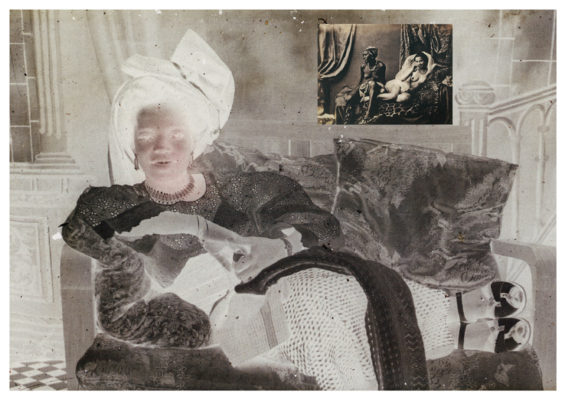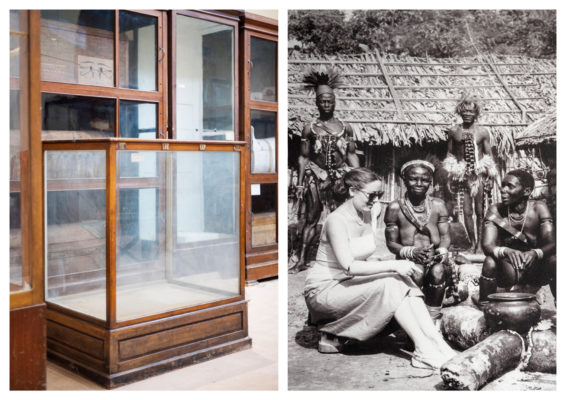Gloria Oyarzabal
Gloria Oyarzabal Lodge (London, 1971) is a Spanish artist photographer with a Bachelor of Fine Arts (UCM). She was programmer and co-founder of Independent Cinema Le Enana Marrón, Madrid (1999-2009), dedicated to author, experimental & alternative cinema.
Gloria Oyarzabal lived three years in Bamako (Mali), researching on the construction of the Idea of Africa, imaginaries and stereotypes; processes of colonization/decolonization, new strategies of colonizing through the mind (beauty canons, modernity concepts, religion…) and African Feminisms.
After her Master’s degree in Creation & Development of Photographic Projects at Blankpaper School of Photography (Madrid, 2014-15), her work has been shown at Fotofestiwal Lodz (Poland), Lagos Photo (Nigeria), FORMAT (United Kindgom), Guetxo Foto (Spain), Athens Photo (Greece), PHE PhotoEspaña (Spain), Thessaloniki Museum of Photography (Greece), PHOTO IS:RAEL (Israel), Bitume Festival Lecce (Italy), Encontros da Imagem Braga (Portugal), Odessa Photo Days (Ukraine), Organ Vida (Croatia), Kaunas Foto (Lithuania)… among others.
In 2017 Gloria Oyarzabal is selected for the artist residence Ranchito Matadero Nigeria/South Africa, held between Madrid and Lagos, facilitating her research on the positioning of the Nigerian woman in our days after the colonization of the concept of women. In 2022 she will be artist resident at Galerie21 (Hamburg) and at Gibellina Foto Festival invited by Fondazione Orestiadi (Sicily, Italy).
Project
La Blanche et la Noire (USUS FRUCTUS ABUSUS)
As a starting point the painting La Blanche et la Noire by the French-Swiss painter Félix Vallotton (1913, Hahnloser Foundation collection, Villa Flora at Winterthur, Switzerland). A painting inspired by Manet’s Olympia and Ingres’ Odalisque à l’esclave, it depicts the Sapphic love between a sylph and a black woman. Unlike his predecessors, Vallotton gets rid of all exotic references. A two-voice dialogue emerges between two women reflecting on gender, race and colonialism.
Starting with a recreation as faithful to the original as possible, passing through different situations, to end up in a contemporary reflection in which they appear reading books as Afrotopia by Felwine Sarr (co-creator with Benedict Savoy of the report commissioned by French President Emmanuel Macron on the issue of looted objects in French museums, notably the Quai Branly Museum in Paris) or Loot: Britain and the Benin Bronzes by Barnaby Phillips.
The colonization of the concept of woman: the responsibility of the risky representation of black woman in the history of Western art, the position of white women and black women, the relationship of the African woman’s body and identity with the colonist that leads to perpetuating stereotypes, exoticization, cultural appropriation, difference, etc... Eternal Odalsques: female slaves who served in large housholds, wrongly understood thanks to the Orientalism school of painting, in which odalisques and other female slaves were often subjects of painterly interest, reinforcing once again a denigrating imaginery. In Muslim community, odalisques were “simply” hard working servants owned by powerful and wealthy households. Erotic images of womaen in the geographically vague “Orient” evoked a life of luxury and indolence far removed from 19th century industrial society; and 21st century standards of representing race and gender.
The concept of museum was born more than 300 years ago, when the collections of certain monarchs, kings or emperors were opened to the public, being since then institutions that give identity and define a nation. But if the origin of these spaces is colonialist, History, knowledge making, ethics, collective and individual memory come into conflict. A review of the relationship between anthropology and museum collections from a colonial past largely plundering, its historicity and historiography, excused behind a concern for discovery – almost always with a “saving” spirit –, leads to the conclusion that for decades they’ve reinforced exotism and distinction, intrinsically related to supremacist discourses. Museum as creators of imaginaries, as institutions that aren’t and have never been a neutral or beneficial holder/exhibitor of objects and artefacts. They are a powerful tool for instilling respect, changing prejudices and revising history. Or dangerously the opposite.
In Roman law, ownership was defined as the absolute full enjoyment over an object or corporeal entity. The USUS was the right that the holder had to make use of the object according to its destination or nature, FRUCTUS was the right to receive the fruits, ABUSUS was the right of disposition based on the power to modify, sell or destroy the object or given entity. Property was perpetual, absolute and exclusive. Based on the concept of ownership, a two-voice dialogue is proposed, in which questions of spoilation, Knowledge making, race and gender are addressed.
Return what has been plundered and looted, both in terms of objects and identity, is it an urgent, universal and feasible question for everyone? Ownership, restitution, reparation, recontextualization.. who has agency to give, return, adjudicate, rename?












